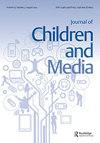Analysis of the constructions of children and the internet in Kenya and Ghana
IF 2.1
3区 心理学
Q2 COMMUNICATION
引用次数: 0
Abstract
ABSTRACT This article uses Kenya and Ghana as case studies to analyse the construction of children, information and communication technologies (ICT) and the internet in Africa. The article discusses the interaction of girl-child protection and media risk discourses and the implication for children, girls, and women in Africa. It highlights the positioning of children in relation to ICT and the internet in terms of gender, age, class, and other demographic factors. It further examines whether, how and which children are constructed as agents or victims, and the ways in which their agency/victimhood is discussed. The article finds dominant child protection and media risk discourses focusing on the risk posed by the internet for children, particularly girls, as the main drivers of the representation of the problem. It also offers a critique of the solutions proposed to addressing the problems presented by the internet for children for taking a homogenising as well as a legalistic and regulatory approach. The article concludes by problematizing these problem representations and solutions, as well as the silences and the ways in which the in problems can be approached differently. IMPACT SUMMARY Prior State of Knowledge: A lot of research documents the realisation of children’s rights provided by the UN Convention on the rights of the Child. However, there is a dearth of research on the digital rights of children particularly in Africa. Novel Contributions: Through analysis of policy and institutional perspectives relating to children, ICTs and the internet in Kenya and Ghana, this article offers a critical approach to the construction of children and ICTs in policy and practice. Practical Implications: The article counters dominant narratives that may affect children’s ability to access and benefit from the internet. It advocates for policies and programs that seek to understand children’s online experiences and support children to engage constructively with the internet.肯尼亚和加纳的儿童和互联网结构分析
摘要本文以肯尼亚和加纳为案例,分析了非洲的儿童建设、信息通信技术和互联网。本文讨论了女童保护与媒体风险话语的互动,以及对非洲儿童、女孩和妇女的影响。它强调了儿童在性别、年龄、阶级和其他人口因素方面与信息通信技术和互联网的关系。它进一步研究了儿童是否、如何以及哪些儿童被塑造成代理人或受害者,以及讨论他们的代理人/受害者身份的方式。文章发现,关注互联网对儿童,尤其是女孩构成的风险的主要儿童保护和媒体风险话语是这一问题的主要驱动因素。它还批评了为解决互联网给儿童带来的问题而提出的解决方案,这些解决方案采取了同质化以及法律和监管的方法。文章最后对这些问题的表示和解决方案进行了问题化,以及沉默和以不同方式处理问题的方式。影响摘要先前的知识状况:许多研究记录了《联合国儿童权利公约》规定的儿童权利的实现情况。然而,缺乏对儿童数字权利的研究,尤其是在非洲。新颖的贡献:通过分析肯尼亚和加纳与儿童、信息和通信技术以及互联网有关的政策和体制视角,本文为在政策和实践中建设儿童和信息和通信系统提供了一种关键的方法。实际意义:这篇文章反驳了可能影响儿童访问互联网并从中受益的主流叙事。它倡导旨在了解儿童在线体验并支持儿童建设性地参与互联网的政策和计划。
本文章由计算机程序翻译,如有差异,请以英文原文为准。
求助全文
约1分钟内获得全文
求助全文

 求助内容:
求助内容: 应助结果提醒方式:
应助结果提醒方式:


